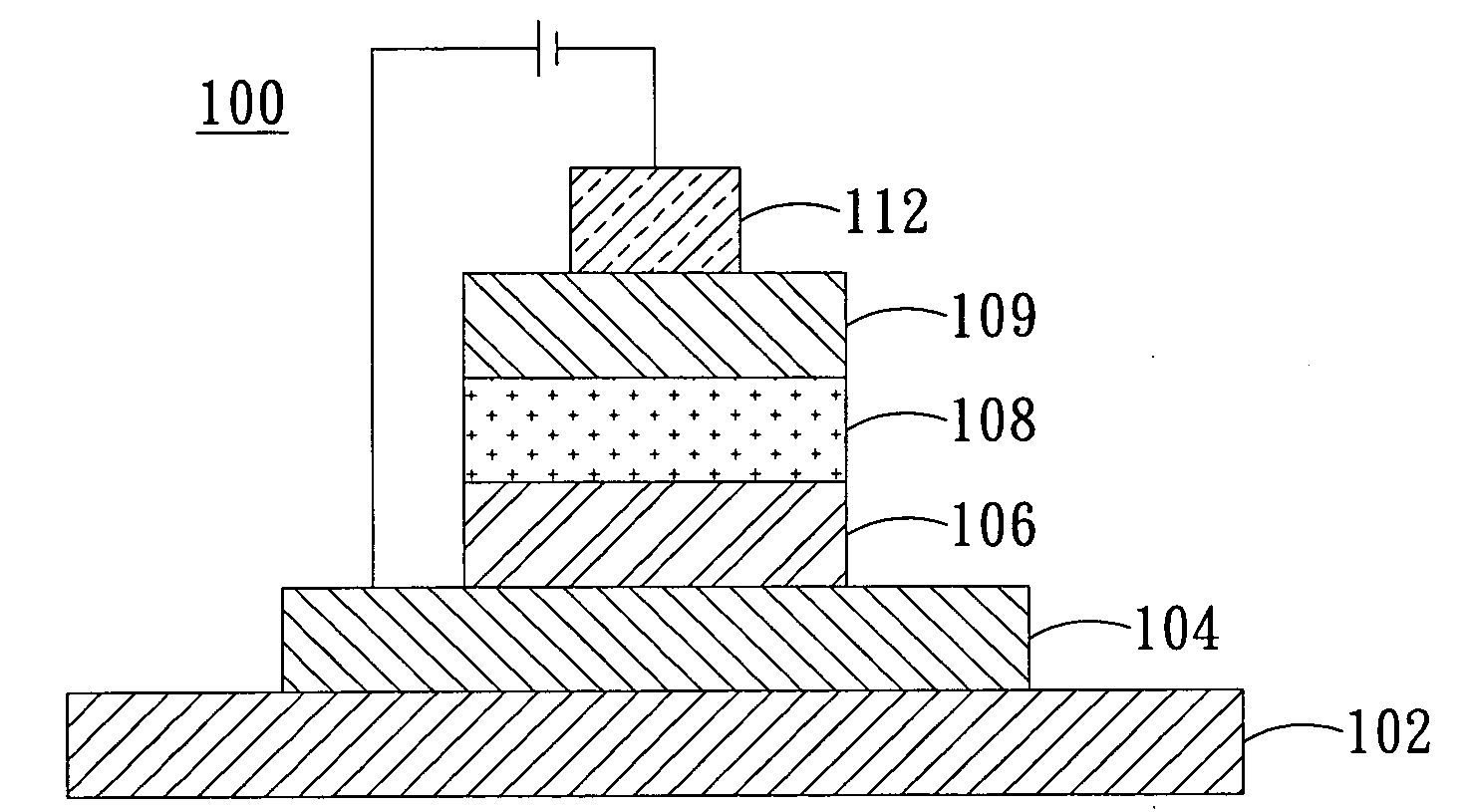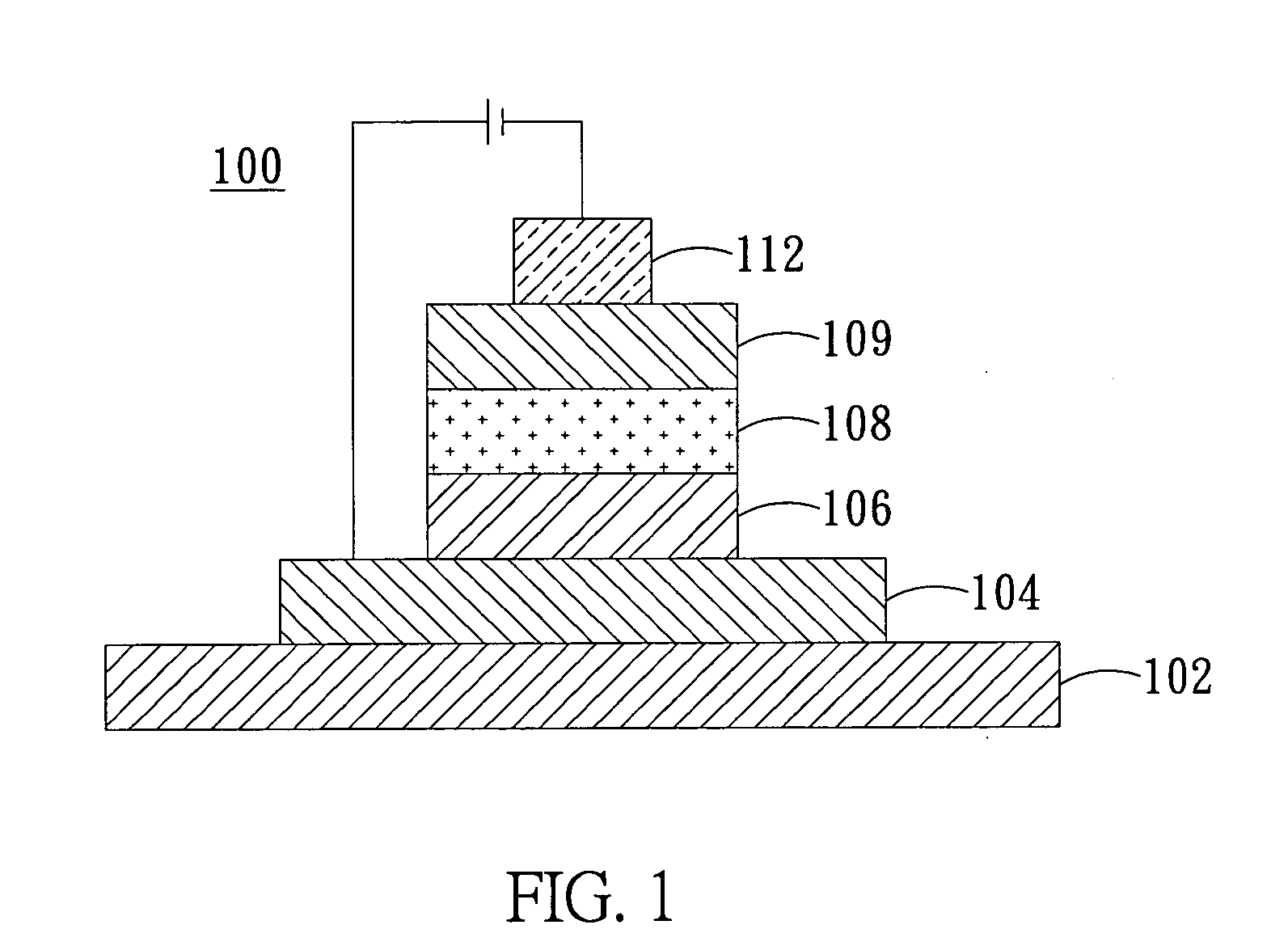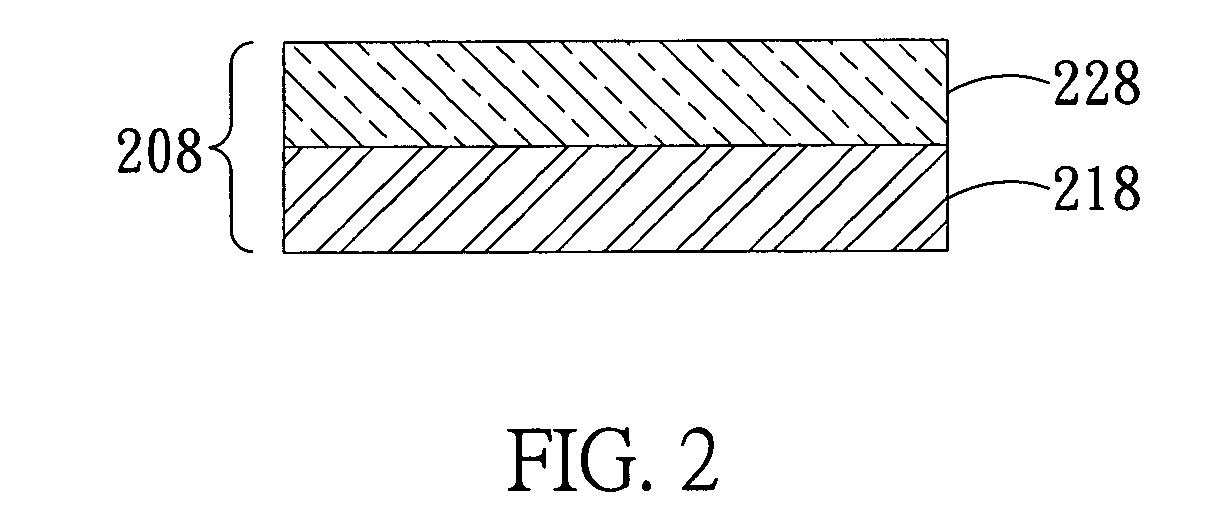Organic light-emitting laminate and organic electroluminescent device conatiaing the same
- Summary
- Abstract
- Description
- Claims
- Application Information
AI Technical Summary
Benefits of technology
Problems solved by technology
Method used
Image
Examples
example 1
[0054]In the organic light-emitting laminate layer of this Example, CzSi was used as first and second main light-emitting materials; PO-01 and FIrpic were respectively used as first and second phosphorescent materials; and TCTA was used as carrier-transporting material.
[0055]A 150 nm thick layer of ITO (indium tin oxide) as anode layer was formed on a 0.7 nm thick glass substrate, then a 45nm thick layer of NPB as hole-transporting layer was deposited on the anode layer and a 15 nm thick layer of DTASi as electron-blocking layer was deposited on the hole-transporting layer, both deposited by thermal vaporization. Next, CzSi as first main light-emitting material and PO-01 as first phosphorescent material, in a weight ratio of 92:8, were co-deposited by vaporization on the electron-blocking layer to form a first light-emitting layer with a thickness of 10 nm, which emits yellow light. Next, CzSi as second main light-emitting material, FIrpic as second phosphorescent material and TCTA ...
example 2
[0056]In the organic light-emitting laminate layer of this Example, CzSi was used as first and second main light-emitting materials; PO-01 and FIrpic were respectively used as first and second phosphorescent materials; and DTASi was used as carrier-transporting material.
[0057]A 150 nm thick layer of ITO (indium tin oxide) as anode layer was formed on a 0.7 nm thick glass substrate, then a 45 nm thick layer of NPB as hole-transporting layer was formed on the anode layer and a 15 nm thick layer of DTASi as electron-blocking layer was formed on the hole-transporting layer, both deposited by thermal vaporization. Next, CzSi as first main light-emitting material and PO-01 as first phosphorescent material, in a weight ratio of 92:8, were co-deposited by vaporization on the electron-blocking layer to form a first light-emitting layer with a thickness of 10 nm, which emits yellow light. Next, CzSi as second main light-emitting material, FIrpic as second phosphorescent material and DTASi as ...
example 3
[0059]In the organic light-emitting laminate layer of this Example, 4CzPBP was used as first and second main light-emitting materials; PO-01 and FIrpic were respectively used as first and second phosphorescent materials; and TCTA was used as carrier-transporting material.
[0060]A 150 nm thick layer of ITO (indium tin oxide) as anode layer was formed on a 0.7 nm thick glass substrate, then a 45 nm thick layer of NPB as hole-transporting layer was formed on the anode layer and a 15 nm thick layer of DTASi as electron-blocking layer was formed on the hole-transporting layer, both deposited by thermal vaporization. Next, 4CzPBP as first main light-emitting material and PO-01 as first phosphorescent material, in a weight ratio of 85:15, were co-deposited by vaporization on the electron-blocking layer to form a first light-emitting layer with a thickness of 12 nm, which emits yellow light. Next, 4CzPBP as second main light-emitting material, FIrpic as second phosphorescent material and TCT...
PUM
 Login to View More
Login to View More Abstract
Description
Claims
Application Information
 Login to View More
Login to View More - R&D
- Intellectual Property
- Life Sciences
- Materials
- Tech Scout
- Unparalleled Data Quality
- Higher Quality Content
- 60% Fewer Hallucinations
Browse by: Latest US Patents, China's latest patents, Technical Efficacy Thesaurus, Application Domain, Technology Topic, Popular Technical Reports.
© 2025 PatSnap. All rights reserved.Legal|Privacy policy|Modern Slavery Act Transparency Statement|Sitemap|About US| Contact US: help@patsnap.com



